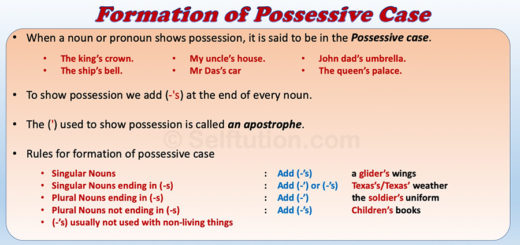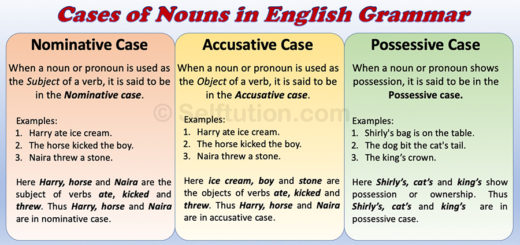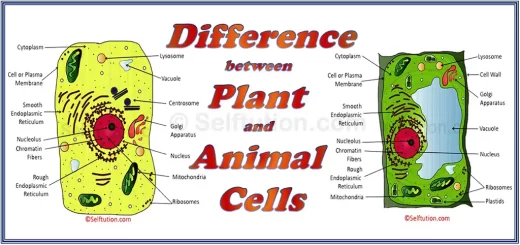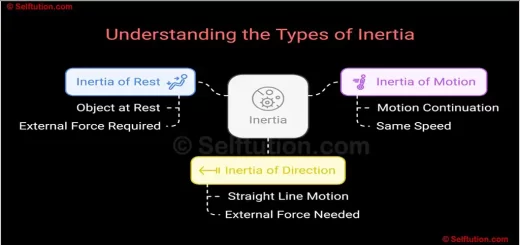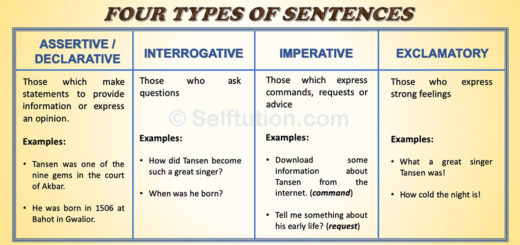Formation of Possessive Case in English with Examples
The formation of the possessive case in English plays a key role in showing ownership or association. It’s a vital aspect of mastering English grammar.
When a noun or pronoun shows possession, it is said to be in the Possessive case or genitive case.
Interestingly, possessive cases aren’t limited to indicating possession—they can also express authorship, origin, type, and more, broadening their usage significantly.
In this post, we’ll explore the rules for the formation of the possessive case in English grammar with examples.
For other noun cases, check my post on Nominative and Accusative.
Let’s understand the formation of the possessive case with these two examples-
- Shirly’s bag is on the table.
- The dog bit the cat’s tail.
In sentence 1, Shirley’s bag means the bag possessed by Shirley or the bag belonging to Shirley.
In sentence 2, the cat’s tail means the tail belonging to the cat.
Here, the form of nouns Shirley and cat is changed to Shirley’s and cat’s to show possession or ownership. The (‘) used to show possession is called an apostrophe.
It is important to note here that to form a possessive case, we cannot simply add (-‘s) at the end of every noun. There are certain rules for the formation of a possessive or genitive case that depend on the state of a noun. Let’s understand these rules for the formation of a possessive case.
RULES FOR FORMATION OF POSSESSIVE OR GENITIVE CASE
Rule 1: Singular Noun
For a singular noun, to form a possessive case, we add (-‘s). Whereas, in the case of a singular noun that ends in (-s), we can add (-‘) or (-‘s), both are acceptable.
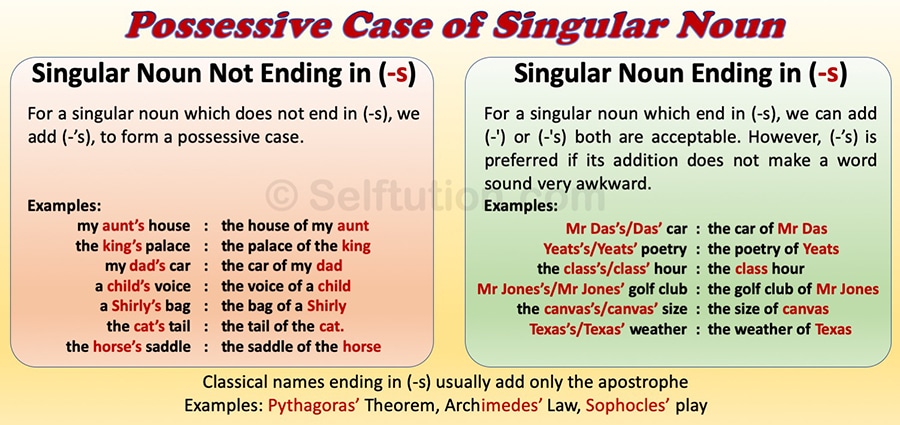
Formation of the Possessive Case for a Singular Noun with Examples
Rule 2: Plural Noun
For the formation of possessive cases with plural nouns that end in (-s), we add just an apostrophe (-‘) after (-s). That is, we do not add (-‘s); we use only (-‘). Whereas, in the case of plural nouns that do not end in (-s), we simply add (-‘s).
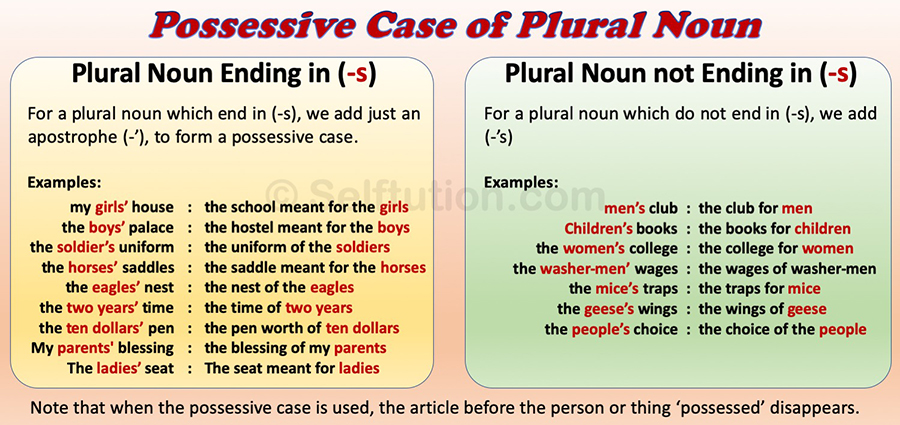
Formation of the Possessive Case for Plural Nouns in English with Examples
Rule 3: Living and Nonliving Things
We use (-‘) or (-‘s) only with living beings. We do not use an apostrophe with nonliving objects. The reason for this is that, unlike living things, non-living things cannot own things. However, as an exception, some people still use possessive cases for non-living things, though here the ‘of‘ construction is better. For example, instead of a glider’s wing, we should use the wings of a glider. Similarly, the usage of the heating system of the train is better than the train’s heating system.
Rule 4: Compound Noun
When a noun or a title consists of several words, we attach (-‘s) only to the last word.
- The king of Nepal’s visit.
- The Prime Minister of India’s speech.
- My brother-in-law’s guitar.
- Henry the Eighth’s wife.
- The Prince of Wales’s helicopter
Rule 5: Nouns in Apposition
When two nouns are in apposition, to form a possessive case, we add (-‘s) to the latter. Apposition means placing near. Therefore, when one noun follows another to describe it, the noun that follows is said to be in apposition. For example,
- That is Tagore the poet’s house.
- This is Kabir, the great reformer’s poem.
- Have you seen Ganguli, the artist’s drawing?
Rule 6: Connected Nouns in the same Sentence
When two nouns closely connected appear in the same sentence, then we add (-‘s) to the latter. For example,
- John and Robert’s bakery.
- Jesus and the Prophet’s teachings.
However, if two or more connected nouns imply separate possession, then we add (-‘s) to both nouns separately.
- Raja Rao’s and R.K. Narayan’s novels.
- Goldsmith’s and Cowper’s poems.
SPECIAL USE OF POSSESSIVE OR GENITIVE CASE
Mostly, we use possessive cases to show possession. However, sometimes we use possessive expressions of time, money, authorship, kind, etc.
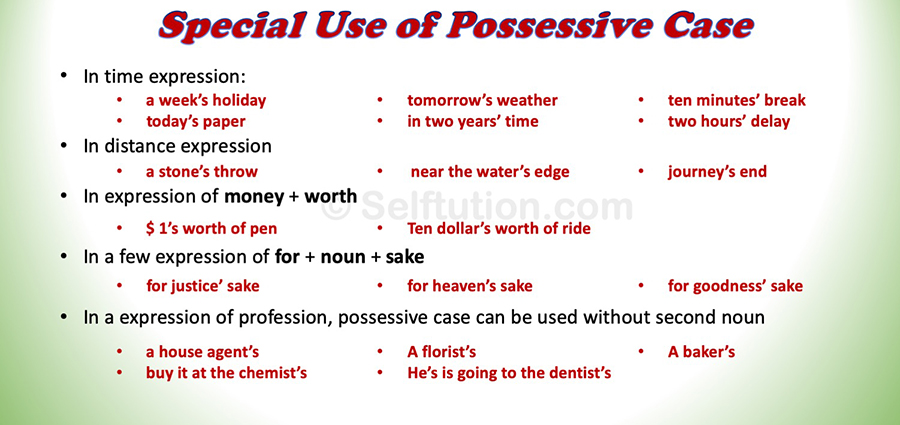
Special Use of the Possessive Case
You may also like…... Types of Chemical Reactions in Chemistry

